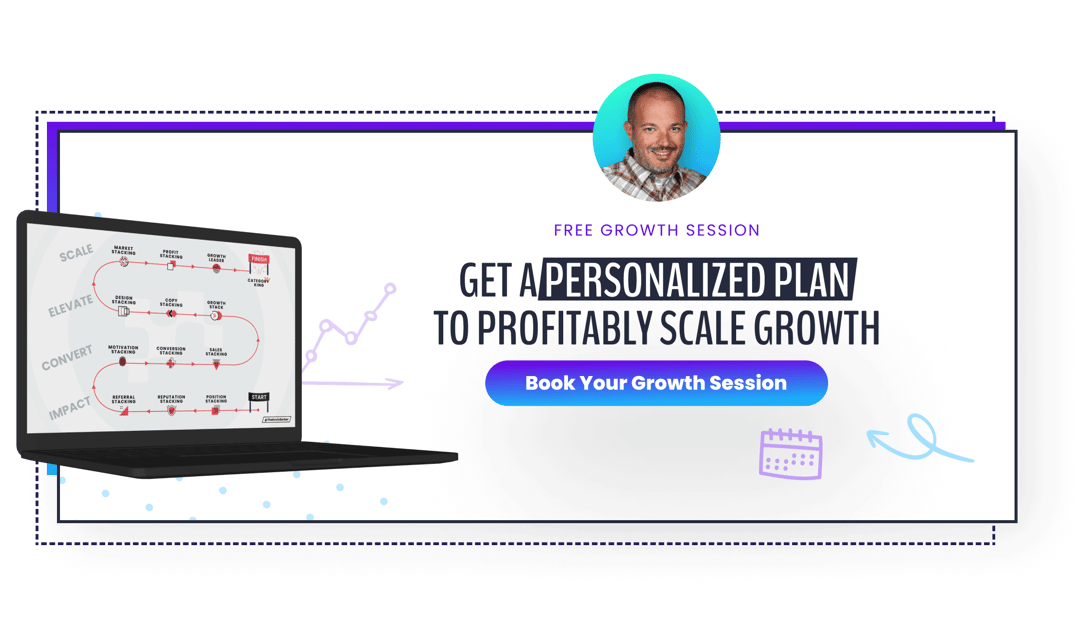-
What is a Qualified Lead?
-
Filling The Sales Pipeline With Qualified Leads
-
4 Proven Tactics for Filling The Sales Pipeline
-
#1. Attract Qualified Leads Using Buyer Personas
-
#2. Align Marketing and Sales Teams
-
#3. Establish Sales Pipeline Stages
-
#4. Use Data to Manage Your Sales Pipeline
-
Filling the Sales Pipeline with Qualified Leads: It's a Process

4 Proven Tactics for Filling The Sales Pipeline with Qualified Leads
How much time do you waste with prospects who aren't a good fit for your service?
Well, according to salespeople, at least fifty percent of initial prospects turn out to be a bad fit. So you might be wasting a lot of time and resources if you're in the same boat.
Buyers are savvier in the modern B2B space. They know when salespeople are underprepared.
They won't be responsive if reps don't know much about their industry or company; or if salespeople fail to create value.
For salespeople to be prepared, there needs to be a collaboration between marketing and sales so that marketing teams hand off qualified leads and salespeople know they're talking to prospects who are ready to buy.
So what can you do to fill your sales pipeline with qualified leads?
In this article, we'll highlight four proven tactics for attracting and managing qualified leads from the start of the sales process to closing the sale so you can drive growth in your business.
Filling The Sales Pipeline With Qualified Leads
Before you can optimize the sales process, think about how you're actually going to fill your sales pipeline in the first place. You need a steady flow of leads to generate revenue consistently.
Without a steady flow of qualified leads, you'll struggle to replace customers that churn, and you'll constantly be chasing your tail.
The key to filling your sales pipeline consistently is a robust lead generation strategy.
When your marketing team passes highly qualified leads to sales, the sales team reliably closes deals, and the business thrives.
However, this only works when there is open communication and effective collaboration between sales and marketing.
Many B2B companies struggle to maintain a consistent and growing sales pipeline. Why?
Low Lead Conversion Rates
Many B2B businesses are too focused on selling the features of their product, and they neglect to sell the benefits and outcomes that it enables.
This results in potential customers ignoring their ads or landing pages because they can’t see what’s in it for them.
Neglected Leads
B2B companies tend to have a long sales cycle, which requires multiple touchpoints and handoffs between departments.
Without robust systems, it’s easy for leads to get lost or not get any follow-up for weeks.
The Wrong Leads
It's challenging for salespeople to know who they should be talking to. Meeting with leads that are unqualified or don’t have buying power wastes time and lengthens the sales cycle.
To build a reliable, leak-proof sales pipe, it’s best to leverage proven tactics and processes.
These four tactics will help you fill your sales pipeline with qualified leads and grow your revenue quarter over quarter. Let's dive in!
4 Proven Tactics for Filling The Sales Pipeline
- Attract Qualified Leads Using Buyer Personas
- Align Marketing and Sales Teams
- Establish Sales Pipeline Stages
- Use Data to Manage Your Sales Pipeline
#1. Attract Qualified Leads Using Buyer Personas
Leads for the sake of leads is never a good play. That's why we don't recommend buying leads. Instead, you want to ensure you have a clearly defined buyer persona.
Lead generation is more effective when you zero in on exactly who your product is for.
Creating a detailed living document about your ideal buyer is the best practice. This is an example of what you might use to define a marketing-qualified lead (MQL)
- Demographic: their location, role or title, and industry.
- Firmographic: type of organization, number of clients, revenue, who their competitors are.
- Psychographic: their dreams, desires, how they want to work, where they want to go, and what they believe.
- Technographic: whether they're open to adopting new technology or they've used premium tools in the past.
You can then go on to set sales-qualified lead criteria:
- An MQL that takes the following action (requests a meeting, joins a webinar, etc.)
To further define your ideal buyer, speak to current customers. What problems did they have that you're solving now? Why did they choose you over a competitor?
You'll gain valuable insights to help define your buyer persona.
#2. Align Marketing and Sales Teams
If I told you there's one thing that could drive massive improvements in your business, what would you guess the one thing is? Probably not marketing and sales alignment.
But when these two departments align, you'll see improvements in return on investment (ROI), a shorter sales cycle, and a better buyer experience.
The ideal is to create a cross-functional growth team that eliminates silos.
It's easier to work with today's modern buyers if sales and marketing support each other.
Without alignment, several things might happen:
- Marketing produces leads, but sales ignore them.
- Marketing creates content that sales doesn't use because the content doesn't answer critical buyer questions.
- Lead and customer data is all over the place, and it's difficult to glean any insights.
5 Ways to Align Your Marketing and Sales Teams
Agree on Lead Qualification: The first step is to define what constitutes an SQL. Both teams need to agree on the definition. Sounds simple, yet only 44% of companies formally agree on the definition of a qualified lead between sales and marketing.
Regular interaction: Marketing and sales teams should have regular meetings to keep track of shared goals and KPIs, workflow, obstacles, and wins.
Sync on Sales: Regularly analyze your CRM data. Review each MQL - were they truly qualified? Where did they drop off? What objections did they have? The more you know, the easier it is to align.
Create Assets: Marketing should create assets for sales to use at every stage of the pipeline, including educational content, a common objections video, pricing guides, and testimonial videos.
A Unified System: Both teams should use the same dashboard and tools to see the same reports and view the actions a prospect takes, from initial contact to closing the sale.
#3. Establish Sales Pipeline Stages
You can easily establish and report on sales pipeline stages with a unified system or platform.
Part of a cross-functional approach will require alignment on exactly what your pipeline looks like and how it functions.
- Define Lifecycle Stage Criteria: What does this look like for your business? We touched on this above, but your team must know what each lifecycle stage represents and the criteria.
- Based on HubSpot's definitions, it might look like this:
MQL: A contact that your marketing team has qualified as ready for the sales team.
SQL: A contact that your sales team has qualified as a potential customer.
Opportunity: A contact who is associated with a deal.
Customer: A contact with at least one closed-won deal.
Evangelist: A customer who has advocated for your organization.
This might be different for your organization. Just ensure you're aligned.
- Lead Generation: Identify, generate, and nurture leads using all the tools at your disposal. From content marketing to paid ads to referral programs, you need to attract your ideal customers to your website and get them into your sales funnel.
- Lead Qualification: Determine if a lead is qualified and a good fit for your product or company using lead scoring and the criteria sales and marketing agree upon.
- Initial Contact: Through sales calls or emails, this is the first interaction between sales and your lead. Sales will try to determine if the prospect needs your product, if they have the budget, and if they're a decision-maker. If they are? Great. If not, can they introduce you to someone with the authority to buy?
- Schedule a Presentation: Reps schedule a meeting or call with your potential customer. Marketing can produce content to further educate leads on your product at this point to prepare them for the call. If the prospect is a decision-maker and wants to move forward, move them along the pipeline.
- Contract Sent: Send the contract with the agreed-upon terms that benefit both the customer and your company. Avoid any last-minute changes.
- Closed Won/Closed Lost: Determine whether you've closed the deal and won their business. If you do, follow up and ensure you have an excellent onboarding process. If you lose the sale, update the pipeline and put leads back into the nurturing process.
#4. Use Data to Manage Your Sales Pipeline
You need to track data to gain valuable insights. Where do your leads come from? Where are they in the sales pipeline? You must keep up with every pipeline stage to stop prospects from falling through the cracks.
There are specific metrics you should always look at
- How many active opportunities and deals do you have in the pipeline?
- Which stage is each opportunity in?
- The percentage of opportunities that pass from one stage to the next
- Where leads generally find friction
- Average sales cycle length
You'll want to review your sales pipeline periodically and ensure your data is up-to-date. Are there any leads that have been in your pipeline for longer than usual? Did you meet with a decision-maker?
Make sure you manage your pipeline and move leads back to the qualification stage if necessary.
Keep a keen eye on pipeline velocity (the speed at which leads move through your pipeline). The higher your velocity, the better. You need to
- Increase the number of opportunities you get by prospecting more efficiently.
- Improve your win rate with more qualified leads.
- Sell bigger deals by upselling and cross-selling.
- Don't skip steps in the sales cycle.
Finding out why you're not closing deals is crucial. When it's all wrapped up under the velocity umbrella, you're in an excellent position to find any bottlenecks.
Perhaps you need to accelerate response times or look for silos. You must also evaluate your sales team. Are they performing well?
A robust CRM that lets sales and marketing work cross-functionally on the same platform using the same dashboards is a must for any modern company.
Related: Hiring A B2B Lead Generation Agency: 8 Pros And Cons
Filling the Sales Pipeline with Qualified Leads: It's a Process
Filling your sales pipeline isn't all about prospecting. Yes, you need a killer lead generation strategy and a steady flow of qualified leads.
But equally important is ensuring sales and marketing are aligned. Silos cause a lot of wasted time and money.
Qualified and knowledgeable leads make your sales team's job easier. You can attract qualified leads and the right people to your product with helpful and relevant content.
Where many businesses trip up is doing the right things in the wrong order. At Lean Labs, we believe you need a scalable system that lets you track the right metrics so that you can take action.
Then you'll see results you can leverage and use your time growing your business, instead of constantly running between sales and marketing.
If you want to see the exact steps we follow to help our clients fill their sales pipelines with qualified leads every month, check out the Growth Playbook.






